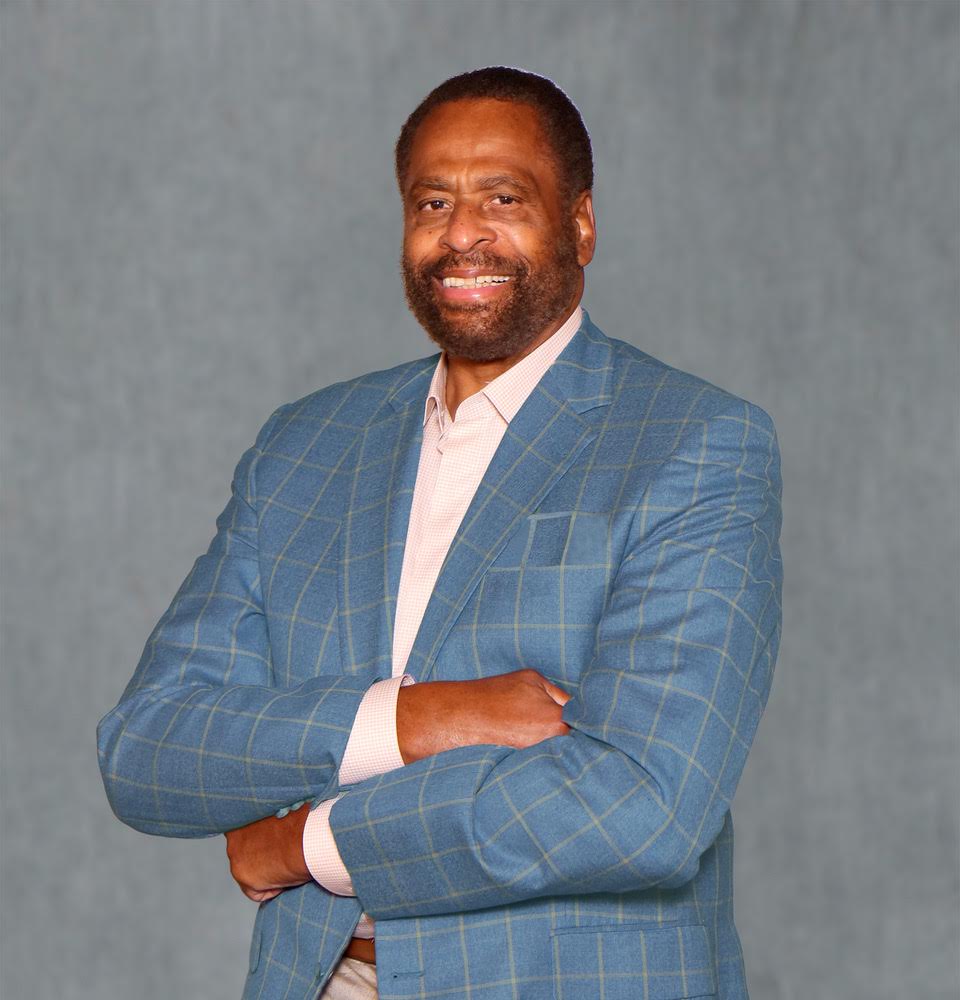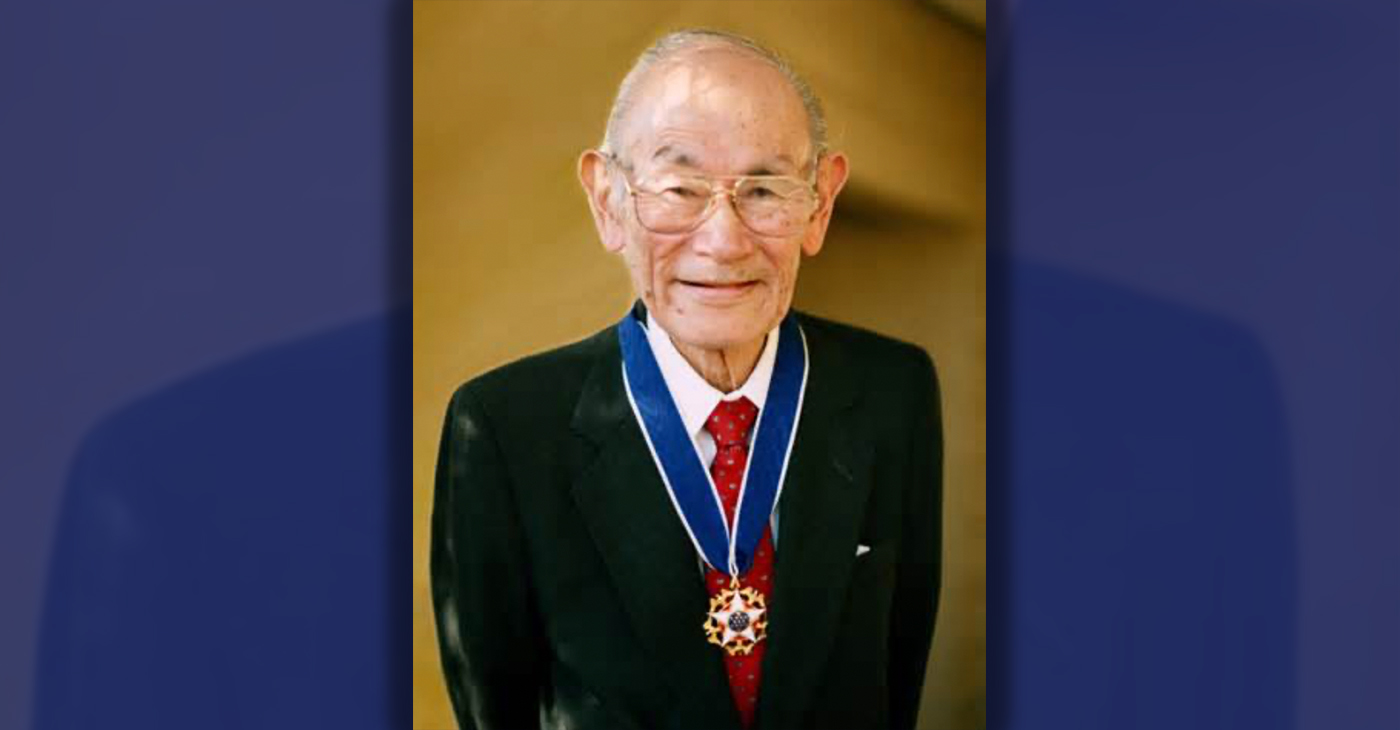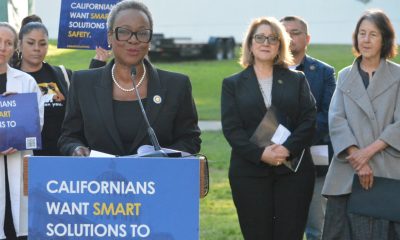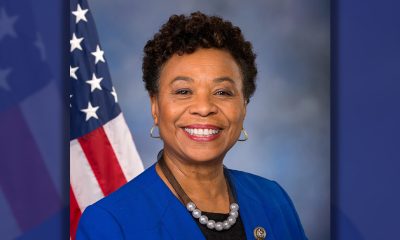Featured
Ex-NBA Coach Spreads the Word About Rare Heart Disease Affecting Blacks
A defensive specialist, Chaney won an NBA title with the Celtics in 1969 and 1974. After he retired in 1979, he spent 22 years coaching, including 12 years as a head coach in the NBA for the Los Angeles Clippers, Houston Rockets, Detroit Pistons, and New York Knicks.

Don Chaney learned to play basketball while growing up in Baton Rouge, La. He became a skilled baller and played the game at the University of Houston. Then, he went on to have a successful career as a point guard — and later a coach — in the National Basketball Association (NBA).
At 75, when Chaney was retired and ready to settle down and enjoy his newfound leisure when he had to acquire knowledge about an issue that has nothing to do with sports and everything to do with healthy living.
In 2019, Chaney was diagnosed with hereditary Transthyretin Amyloid Cardiomyopathy (ATTR-CM), a rare but life-threatening disease that can lead to heart failure. It disproportionately impacts African Americans.
Now, Chaney looks at raising awareness about the disease as a new style of coaching. He said the rare disease is something that “the average Black family” should take “extremely seriously.”
“It is a process. Every time I have an opportunity to bring it up and spread awareness about the disease, I try my best to do it,” Chaney told California Black Media (CBM) during a virtual interview. “The biggest thing is that the Black community has the highest rate of heart disease in the United States. Doctors are seldom aware of the fact that this particular disease exists. They don’t look for it. So, if you’re not looking for (ATTR-CM) you’re not going to get the correct diagnosis.”
ATTR-CM is an underdiagnosed and potentially fatal disease, according to the American Heart Association, the nation’s oldest and largest voluntary organization dedicated to fighting heart disease and stroke.
The disease is characterized by deposits of amyloid protein fibrils in the walls of the left ventricle, the main pumping chamber of the heart. ATTR-CM, the amyloid protein is made of transthyretin, a protein found in the blood that transports important body fluids.
The amyloid protein deposits cause the heart walls to become stiff, resulting in the inability of the left ventricle to properly relax, fill with blood and adequately squeeze to pump blood out of the heart.
Dr. Kevin Williams, the chief medical officer for rare disease at the biotechnology company Pfizer, says his research shows that ATTR-CM’s symptoms are similar to those of more common causes of heart failure such as fatigue, shortness of breath, and swelling in the lower legs.
He also said that the symptoms are not commonly perceived to be linked to a heart condition — like carpal tunnel syndrome (numbness, tingling, or pain in the fingers), bicep tendon rupture, gastrointestinal issues (constipation, diarrhea, and nausea), and lumbar spinal stenosis (a narrowing of the open spaces in the lower spine).
“All of these factors can lead to delays in diagnosis or misdiagnosis,” said Williams, who is a Black medical doctor. “In the African American community, it’s important to fully explore the underlying cause of these conditions with the help of a cardiologist.”
After his collegiate days at the University of Houston expired, Chaney was selected the 12th pick in the first round of the 1968 NBA Draft by the Boston Celtics. The Houston Mavericks of the American Basketball Association also drafted him that year.
A defensive specialist, Chaney won an NBA title with the Celtics in 1969 and 1974. After he retired in 1979, he spent 22 years coaching, including 12 years as a head coach in the NBA for the Los Angeles Clippers, Houston Rockets, Detroit Pistons, and New York Knicks.
Since 2004, Chaney has relatively enjoyed retirement, but his heart condition was always a concern. Fatigue, palpitations, shortness of breath, and swollen ankles were something he thought was years of physically playing the game of basketball. He learned it was much deeper than the sports.
“I was dealing with all these issues, but I hadn’t really made all the connections,” Chaney told CBM. “I just assumed all the symptoms were from my years of pounding on the floor in professional basketball. I thought it was normal. If I had known this, I could have started treatment earlier.”
While he made numerous visits to the doctors to attend to his medical issues, Chaney said he started to “put the pieces” together after he began to share his family’s past with cardiologists.
Chaney’s mother and grandmother passed away due to heart disease. Back when they were alive, he recalled them complaining about having the same symptoms – fatigue, shortness of breath, swollen ankles and knees – he was experiencing.
“The symptoms are similar,” Chaney said. ‘When you throw in carpal tunnel syndrome along with fatigue and palpitations… that pushes you into another category. So, I had some tests and found out the scary part that it was hereditary. We went on to try to manage it from that point on.”
There are two types of ATTR-CM, wild-type, and hereditary. Wild-type is thought to be the most common form of ATTR-CM and is mostly associated with men over the age of 60.
Hereditary ATTR-CM is inherited from a relative and is due to genetics, affecting both men and women. In the U.S., the most common genetic mutation associated with hereditary ATTR-CM is found almost exclusively in people of African or Afro-Caribbean descent.
It took more than 10 years to receive the right diagnosis despite knowing his family’s history of heart failure and experiencing heart-related symptoms, Chaney said.
“It’s probably because African Americans don’t tell doctors everything that’s going on with them,” he said. “I’m guilty of it, too. They gave me some medicine but that didn’t really help much until they did further testing. It went beyond that. I actually had heart disease. You just have to tell your doctors everything.”
Awareness of ATTR-CM among both patients and some doctors remains low, which in Chaney’s case and many others, could lead to delayed or misdiagnosis. But if symptoms seem unrelated it is best to visit a primary care doctor or an experienced cardiologist to discuss ATTR-CM, Chaney said.
In the United States, hereditary ATTR-CM occurs in African Americans (prevalent in approximately 1 in 25) and in older patients who may be misdiagnosed with high blood pressure-related heart disease.
Chaney said he is “stressed to a degree” because he also has been spending time to get his family into testing mode since the disease is hereditary. His sister’s and daughter’s tests came back negative. He’s still waiting on his sons to go through the process.
“They may not have it. But the disease is still present (in the family) and you could pass it down to your children,” Chaney said he has told members of his family. “I’m still going to press the issues to get them tested.”
While managing his ATTR-CM symptoms, Chaney spends time taking his grandchildren to NBA games in the Houston area. He also restores antique automobiles, participates in horseback riding, and is constantly testing his fishing skills.
His wife, Jackie Chaney, is now his primary caregiver and she is the one that calls the shots, he said.
“I do a lot of things within reason,” Chaney said. “I used to jump out of airplanes. But I don’t do that anymore. My wife monitors my condition, makes sure I see the doctor, and sees to it that I take my medication. I get a lot of help from a lot of people around here. I’m really enjoying my life.”
Activism
Oakland Post: Week of April 17 – 23, 2024
The printed Weekly Edition of the Oakland Post: Week of April 17 – 23, 2024

To enlarge your view of this issue, use the slider, magnifying glass icon or full page icon in the lower right corner of the browser window. ![]()
Activism
Oakland Schools Honor Fred Korematsu Day of Civil Liberties
Every Jan. 30, OUSD commemorates the legacy of Fred Korematsu, an Oakland native, a Castlemont High School graduate, and a national symbol of resistance, resilience, and justice. His defiant stand against racial injustice and his unwavering commitment to civil rights continue to inspire the local community and the nation. Tuesday was “Fred Korematsu Day of Civil Liberties and the Constitution” in the state of California and a growing number of states across the country.

By Post Staff
Every Jan. 30, OUSD commemorates the legacy of Fred Korematsu, an Oakland native, a Castlemont High School graduate, and a national symbol of resistance, resilience, and justice.
His defiant stand against racial injustice and his unwavering commitment to civil rights continue to inspire the local community and the nation. Tuesday was “Fred Korematsu Day of Civil Liberties and the Constitution” in the state of California and a growing number of states across the country.
One OUSD school is named in his honor: Fred T. Korematsu Discovery Academy (KDA) elementary in East Oakland.
Several years ago, founding KDA Principal Charles Wilson, in a video interview with anti-hate organization “Not In Our Town,” said, “We chose the name Fred Korematsu because we really felt like the attributes that he showed in his work are things that the children need to learn … that common people can stand up and make differences in a large number of people’s lives.”
Fred Korematsu was born in Oakland on Jan. 30, 1919. His parents ran a floral nursery business, and his upbringing in Oakland shaped his worldview. His belief in the importance of standing up for your rights and the rights of others, regardless of race or background, was the foundation for his activism against racial prejudice and for the rights of Japanese Americans during World War II.
At the start of the war, Korematsu was turned away from enlisting in the National Guard and the Coast Guard because of his race. He trained as a welder, working at the docks in Oakland, but was fired after the bombing of Pearl Harbor in 1941. Fear and prejudice led to federal Executive Order 9066, which forced more than 120,000 Japanese Americans out of their homes and neighborhoods and into remote internment camps.
The 23-year-old Korematsu resisted the order. He underwent cosmetic surgery and assumed a false identity, choosing freedom over unjust imprisonment. His later arrest and conviction sparked a legal battle that would challenge the foundation of civil liberties in America.
Korematsu’s fight culminated in the Supreme Court’s initial ruling against him in 1944. He spent years in a Utah internment camp with his family, followed by time living in Salt Lake City where he was dogged by racism.
In 1976, President Gerald Ford overturned Executive Order 9066. Seven years later, the 9th Circuit Court of Appeals in San Francisco vacated Korematsu’s conviction. He said in court, “I would like to see the government admit that they were wrong and do something about it so this will never happen again to any American citizen of any race, creed, or color.”
Korematsu’s dedication and determination established him as a national icon of civil rights and social justice. He advocated for justice with Rosa Parks. In 1998, President Bill Clinton gave him the Presidential Medal of Freedom saying, “In the long history of our country’s constant search for justice, some names of ordinary citizens stand for millions of souls … To that distinguished list, today we add the name of Fred Korematsu.”
After Sept. 11, 2001, Korematsu spoke out against hatred and discrimination, saying what happened to Japanese Americans should not happen to people of Middle Eastern descent.
Korematsu’s roots in Oakland and his education in OUSD are a source of great pride for the city, according to the school district. His most famous quote, which is on the Korematsu elementary school mural, is as relevant now as ever, “If you have the feeling that something is wrong, don’t be afraid to speak up.”
Community
For Cervical Cancer Month, Medical Community Focused on Education
January was Cervical Cancer Awareness Month. Physicians, advocates and others in the medical community commemorated the month by raising awareness about a form of cancer they say is highly preventable and treatable. Cervical cancer is caused by a virus called the human papillomavirus (HPV) and it develops slowly over time but can be prevented with proper care in girls as young as 13 years old.

By Magaly Muñoz
January was Cervical Cancer Awareness Month.
Physicians, advocates and others in the medical community commemorated the month by raising awareness about a form of cancer they say is highly preventable and treatable.
Cervical cancer is caused by a virus called the human papillomavirus (HPV) and it develops slowly over time but can be prevented with proper care in girls as young as 13 years old.
Sonia Ordonez, an OBGYN and gynecology surgeon at Kaiser Permanente, stated that as soon as people with cervixes reach the maturity reproductive age, they should start taking preventative measures like getting the HPV vaccine. The vaccine involves a series of two-doses for people aged 9 through 14 or three-doses for people 15 through 45 years old.
“I see a lot of young women who can’t remember or may not have gotten [the vaccine] when they were younger, or maybe got one, but we can give them the series of vaccines and restart at any point in time,” Ordonez said.
She said that cervical cancer is not the only cancer caused by HPV. Strains of the virus can also lead to throat, anal and penile cancers.
Screening is also an effective way to check for cervical cancer and should be done every three years after someone turns 21, doctors recommend. It is best to start as early as possible to catch occurrences early.
Ordonez said that this cancer is also more likely found in people of color and has led to more deaths overall.
A Mayo Clinic article published last month stated that Black women are more likely to be diagnosed and die of cervical cancer, compared to White women in the U.S.
2,000 Black women are diagnosed every year with cervical cancer and 40% die as a result.
“This disparity is not due to genetic differences among White, Black or Hispanic women, but rather related to systemic racism, access to healthcare and socioeconomic factors,” Dr. Olivia Cardenas-Trowers, a Mayo Clinic urogynecologist, said in the article.
Ordonez stated that immigrant women are also highly susceptible to the cancer, as many Latin American countries may not have accessibility to screenings or lack of insurance makes it harder for them to get tested.
Hispanic women are 40% more likely to be diagnosed with cervical cancer, and 30% more likely to die from it, as compared to non-Hispanic White women, according to the Office of Minority Health.
Family medicine physician, Joy Anyanwu, stated that the pandemic contributed to hesitancy about getting cervical cancer screenings among some women. Other factors are people’s aversion to vaccines, parents not wanting to believe that their children are or will become sexually active, and doubt about the overall effectiveness of the vaccine.
“The vaccine is very safe — over 97% effective in preventing cervical cancer,” Anyanwu said. “Even if you aren’t having sex, the earlier you start would actually help.”
Anyanwu said she understands that parents might not want to ask questions about their children’s reproductive health, but it’s a mindset that can be a barrier to having important conversation about prevention or care.
To keep families their families and communties healthy, the doctor emphasized that people should prioritize keeping up with their vaccine series and going to screenings every year.
-

 Activism4 weeks ago
Activism4 weeks agoOakland Post: Week of March 20 – 26, 2024
-

 #NNPA BlackPress3 weeks ago
#NNPA BlackPress3 weeks agoCOMMENTARY: D.C. Crime Bill Fails to Address Root Causes of Violence and Incarceration
-

 #NNPA BlackPress3 weeks ago
#NNPA BlackPress3 weeks agoMayor, City Council President React to May 31 Closing of Birmingham-Southern College
-

 #NNPA BlackPress3 weeks ago
#NNPA BlackPress3 weeks agoCOMMENTARY: Lady Day and The Lights!
-

 #NNPA BlackPress3 weeks ago
#NNPA BlackPress3 weeks agoFrom Raids to Revelations: The Dark Turn in Sean ‘Diddy’ Combs’ Saga
-

 #NNPA BlackPress3 weeks ago
#NNPA BlackPress3 weeks agoBaltimore Key Bridge Catastrophe: A City’s Heartbreak and a Nation’s Alarm
-

 #NNPA BlackPress3 weeks ago
#NNPA BlackPress3 weeks agoBaltimore’s Key Bridge Struck by Ship, Collapses into Water
-

 Activism3 weeks ago
Activism3 weeks agoOakland Post: Week of March 27 – April 2, 2024

















































